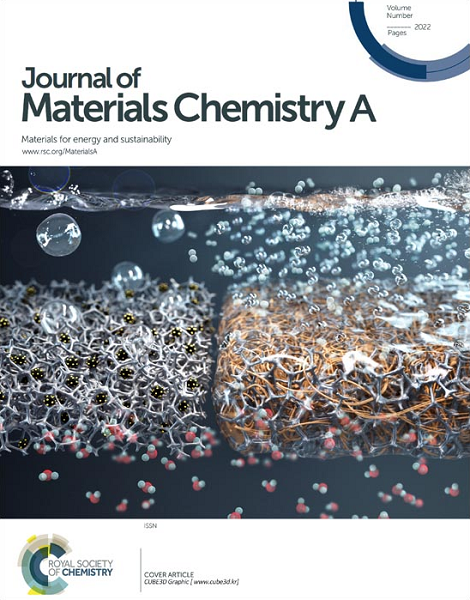金属-有机框架中单原子形成的原子尺度可视化
IF 10.7
2区 材料科学
Q1 CHEMISTRY, PHYSICAL
引用次数: 0
摘要
最近,非贵金属单原子(SAs)作为一种开创性的材料出现,提供了更高的效率,减少金属消耗和广泛的适用性。在本研究中,沸石咪唑骨架-8 (ZIF-8)作为模板包封铁前驱体,并在热解过程中转化为多孔的氮掺杂碳(PNC),有效捕获氮缺陷部位的Fe SAs。采用原子尺度原位高分辨率扫描透射电镜(HR-STEM)研究了325 ~ 400℃期间多孔ZIF-8结构中Fe - SA的形成过程。SAs的生成速率随温度的升高而增大,最重要的是,随着热解时间的延长,sa的生成速率在早期较快,然后逐渐减慢,在400℃热解3 min和30 min时,sa的密度分别为2.04 × 105 /μm2和4.21 × 105 /μm2。两个阶段的形成过程可能分别由分散和聚集的Fe(acac)3前驱体的Fe原子化控制。通过理论计算来了解这两个阶段的形成机理。通过原子尺度的原位观察,这些见解提供了对合成途径的精确控制,从而推进了针对催化应用及其他应用的定制SA材料的设计。本文章由计算机程序翻译,如有差异,请以英文原文为准。
Atomic-Scale Visualization of Single Atom Formation in Metal-Organic Frameworks
Recently, non-noble metal single atoms (SAs) emerge as a groundbreaking class of materials, offering enhanced efficiency, reduced metal consumption, and widespread applicability. In the present study, zeolite imidazole frameworks-8 (ZIF-8) acts as a template for encapsulating Fe precursors and transform into porous nitrogen-doped carbon (PNC) upon pyrolysis, effectively capturing Fe SAs at nitrogen defect sites. The evolutions of Fe SA formation within porous ZIF-8 structure using atomic-scale in situ high-resolution scanning transmission electron microscopy (HR-STEM) from 325 ℃ to 400 ℃ are investigated. The formation rates of SAs increase with temperature, most importantly, the formation rates of SAs are rapid in the early stage and then slow down with prolonged pyrolysis time, e.g. the densities of SAs are 2.04 × 105 /μm2 and 4.21 × 105 /μm2 at 400 oC for 3 min and 30 min, respectively. The two-stage formation process may be governed by the atomization of Fe atoms from dispersed and clustered Fe(acac)3 precursors, respectively. Theoretical calculations are implemented to understand the formation mechanisms of the two stages. These insights, facilitated by atomic-scale in situ observation, offer precise control over synthesis pathways, thereby advancing the design of tailored SA materials for catalytic applications and beyond.
求助全文
通过发布文献求助,成功后即可免费获取论文全文。
去求助
来源期刊

Journal of Materials Chemistry A
CHEMISTRY, PHYSICAL-ENERGY & FUELS
CiteScore
19.50
自引率
5.00%
发文量
1892
审稿时长
1.5 months
期刊介绍:
The Journal of Materials Chemistry A, B & C covers a wide range of high-quality studies in the field of materials chemistry, with each section focusing on specific applications of the materials studied. Journal of Materials Chemistry A emphasizes applications in energy and sustainability, including topics such as artificial photosynthesis, batteries, and fuel cells. Journal of Materials Chemistry B focuses on applications in biology and medicine, while Journal of Materials Chemistry C covers applications in optical, magnetic, and electronic devices. Example topic areas within the scope of Journal of Materials Chemistry A include catalysis, green/sustainable materials, sensors, and water treatment, among others.
 求助内容:
求助内容: 应助结果提醒方式:
应助结果提醒方式:


